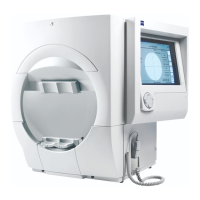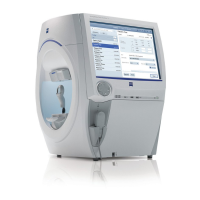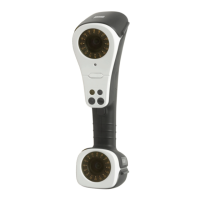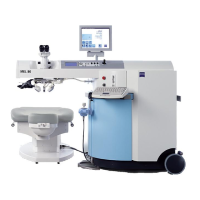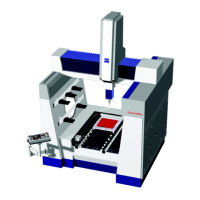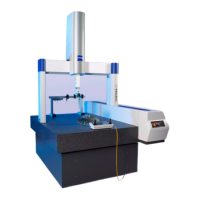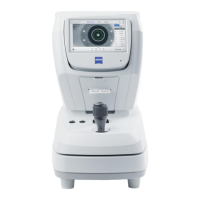Humphrey Field Analyzer II-
i
series User Manual 2660021145640 A
SITA Normative and GPA Databases
K-7
ethnicity was not collected as part of this database collection. However, data was collected from
centers in Asia, North America and Europe. For the GPA short-term reproducibility dataset, the age
distribution was determined by the prevalence of glaucoma in the test population. Only 30 subjects
were younger than 50 years. This may affect the applicability of GPA to younger patients.
Data Analysis
Significance levels were calculated for all three
databases. The values for 10%, 5%, 2%, 1% and
0.5% were calculated for the significance levels in the SITA (see “The Single Field Analysis Prin
tout,”
on page 7-4) and SITA-SWAP (see “Printing Out SITA-SWAP Results,” on page 9-8) normative
databases. GPA utilizes the 5% significance limit in its determination of the
Progression Analysis
Probability Plots (see “GPA Event Analysis Includes Pr
ogression Indicators,” on page 8-4). The
normative databases were used to generate age-corr
ected significance levels for deviation from
normal. The GPA database was used to generate significance levels for change that exceeds
expected test-retest variability.
Results in patients 80 years of age or older should be interpreted with caution since only eight subjects
were included in the SITA normative databases who were 80 years of age or older, and none were
included in the SITA-SWAP database. For the SITA normative databases, 56 subjects were included who
were between 70 and 79 years of age, and for SITA-SWAP there were 16. The SITA and SITA-SWAP
databases do not have subjects with refractive errors outside the -5D to +5D range. Use caution when
applying these normative limits to results from subjects with refractive errors outside the -5D to +5D
range.
Conclusion
The SITA and SITA-SWAP normative databases were cr
eated using data from subjects that were
deemed representative of a normal population. The GPA database was created using data from
subjects that were deemed representative of a stable glaucoma population. The doctor can compare
individual patient measurements to those acquired from these database populations.
Note: Selected references can be found in “SITA References,” on page 4-10, “GPA References,” on
page 8-36 and “SWAP References,” on page 9-15.
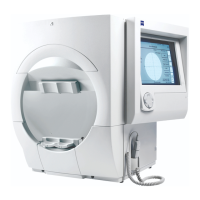
